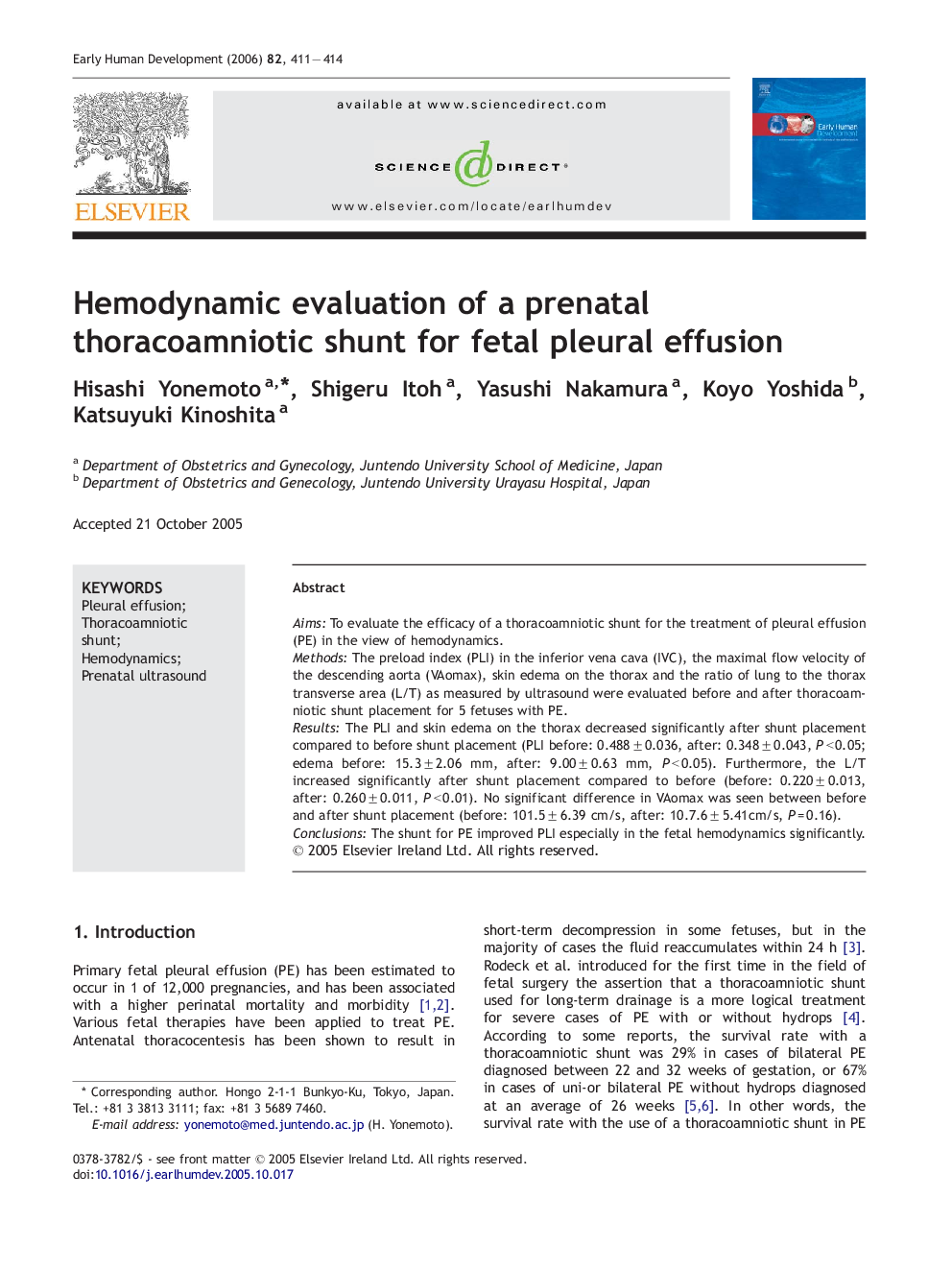| Article ID | Journal | Published Year | Pages | File Type |
|---|---|---|---|---|
| 3917387 | Early Human Development | 2006 | 4 Pages |
AimsTo evaluate the efficacy of a thoracoamniotic shunt for the treatment of pleural effusion (PE) in the view of hemodynamics.MethodsThe preload index (PLI) in the inferior vena cava (IVC), the maximal flow velocity of the descending aorta (VAomax), skin edema on the thorax and the ratio of lung to the thorax transverse area (L/T) as measured by ultrasound were evaluated before and after thoracoamniotic shunt placement for 5 fetuses with PE.ResultsThe PLI and skin edema on the thorax decreased significantly after shunt placement compared to before shunt placement (PLI before: 0.488 ± 0.036, after: 0.348 ± 0.043, P < 0.05; edema before: 15.3 ± 2.06 mm, after: 9.00 ± 0.63 mm, P < 0.05). Furthermore, the L/T increased significantly after shunt placement compared to before (before: 0.220 ± 0.013, after: 0.260 ± 0.011, P < 0.01). No significant difference in VAomax was seen between before and after shunt placement (before: 101.5 ± 6.39 cm/s, after: 10.7.6 ± 5.41cm/s, P = 0.16).ConclusionsThe shunt for PE improved PLI especially in the fetal hemodynamics significantly.
